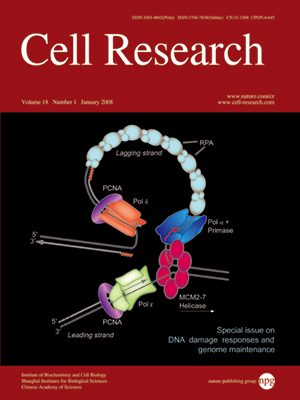
Volume 18, No 1, Jan 2008
ISSN: 1001-0602
EISSN: 1748-7838 2018
impact factor 17.848*
(Clarivate Analytics, 2019)
Volume 18 Issue 1, January 2008: 125-133
REVIEWS
Flexibility in the order of action and in the enzymology of the nuclease, polymerases, and ligase of vertebrate nonhomologous DNA end joining: relevance to cancer, aging, and the immune system
Michael R Lieber1, Haihui Lu1, Jiafeng Gu1 and Klaus Schwarz2
1USC Norris Comprehensive Cancer Center, University of Southern California Keck School of Medicine, Rm 5428, Los Angeles, CA 90089-9176, USA;
2Institute for Clinical Transfusion Medicine & Immunogenetics, Institute for Transfusion Medicine, University Hospital, Ulm, Germany
Correspondence: Michael R Lieber(lieber@usc.edu)
Nonhomologous DNA end joining (NHEJ) is the primary pathway for repair of double-strand DNA breaks in human cells and in multicellular eukaryotes. The causes of double-strand breaks often fragment the DNA at the site of damage, resulting in the loss of information there. NHEJ does not restore the lost information and may resect additional nucleotides during the repair process. The ability to repair a wide range of overhang and damage configurations reflects the flexibility of the nuclease, polymerases, and ligase of NHEJ. The flexibility of the individual components also explains the large number of ways in which NHEJ can repair any given pair of DNA ends. The loss of information locally at sites of NHEJ repair may contribute to cancer and aging, but the action by NHEJ ensures that entire segments of chromosomes are not lost.
Cell Research (2008) 18:125-133. doi: 10.1038/cr.2007.108; published online 18 December 2007
FULL TEXT | PDF
Browse 1874


